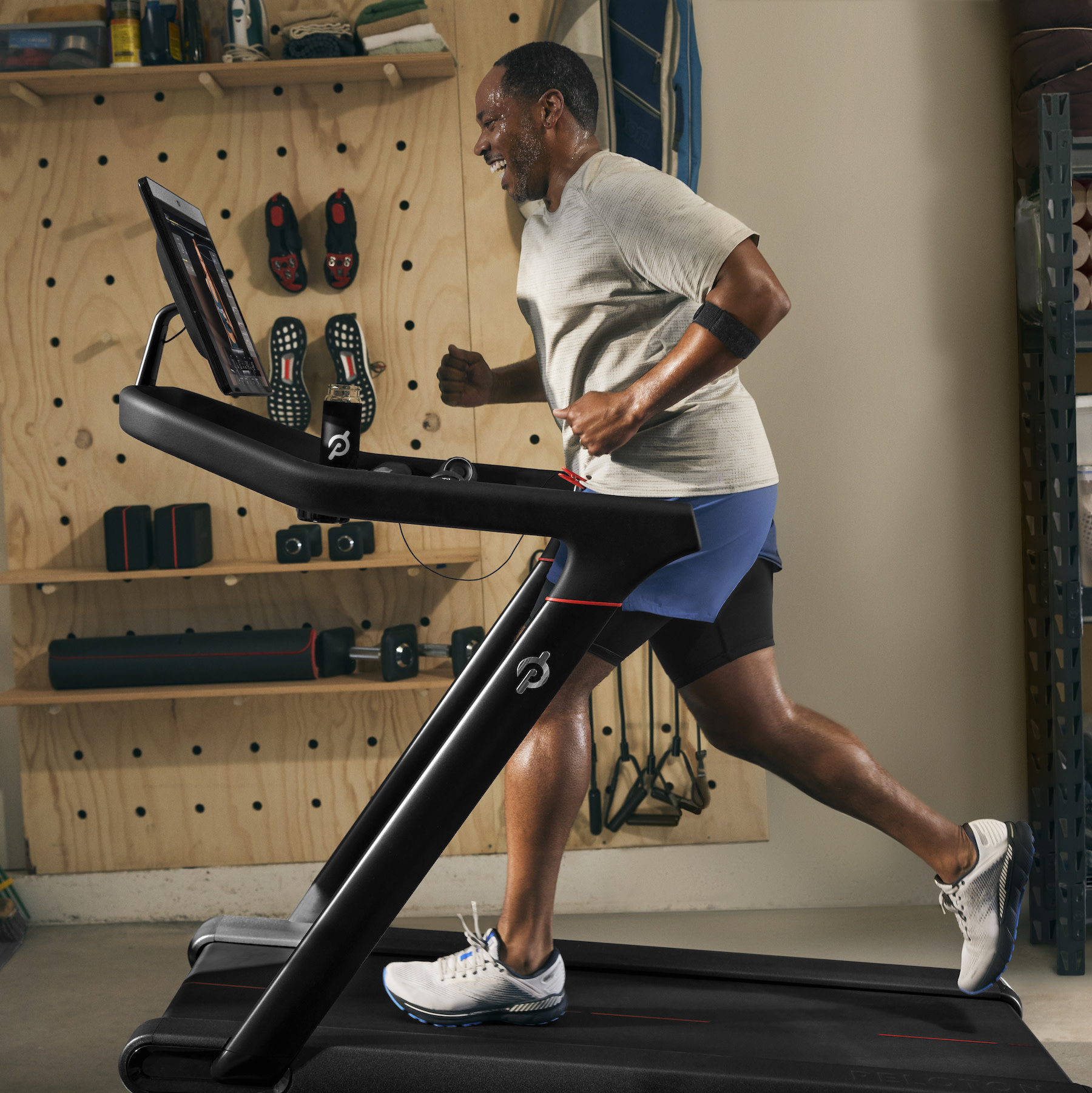
How to Use The Talk Test to Create a More Balanced Exercise Routine
Working out at a conversational pace might be more worthwhile than you thought.
By Eric Arnold•
Unsure what intensity you should be exercising at? Learn how to use the talk test to create a more balanced training plan.
You likely know the feeling of being breathless the last few minutes of a run, ride, row, or HIIT class. For many, it’s become synonymous with a “good” workout. But what about a workout in which you could easily carry a conversation?
Whether you want to push for PRs or simply build a more well-rounded fitness routine, both kinds of workouts are important. That’s where the talk test comes in.
What is the Talk Test?
The talk test is an easy to use method for measuring exercise intensity, or, how hard you’re working out. It’s just what it sounds like: how easy or difficult it is to carry a brief, mid-workout conversation.
Typically, the talk test is measured through three different intensities:
Low intensity: If you can still speak in full sentences (think: chatting with a friend on a walk), it is considered a low intensity activity for you.
Moderate intensity: Being able to get out a few sentences, but with labored breathing, during a workout means you’re working at moderate intensity. You may have felt this while trying to sing along to a favorite song during a workout.
High intensity: At this level, you should only be able to get out one or two words at a time.
While, yes, some of us are chattier than others while exercising, the talk test actually serves a useful purpose. It’s a great way of determining how hard you’re working during an extended period of aerobic exercise.
If, say, your partner appears mid-ride or run to ask you where the bug spray is, you should be able to respond, “In the closet, on the shelf by the bath towels,” without needing a breath somewhere in the middle. In a low-intensity workout, you could keep pedaling and easily launch into a detailed history of entomology (should your partner care to listen).
By contrast, in a high-intensity workout, you’d need multiple breaths to get through your response. It might sound more like, “In…the closet…on the shelf…by the…bath towels.”
Not sure if you’re pushing too hard? And there’s no one around to ask you about elusive household items? Just speak a sentence or two out loud. Maybe utter your favorite movie quote or song lyric; if you can't say it easily, then dial your workout back a bit. If you’re taking a recovery class, follow the instructor’s callouts, as recovery-day workouts are programmed to serve the intended purpose.
How to Use the Talk Test
The talk test shouldn’t be one of those things you do occasionally. Rather, it should be as standard a part of your workout routine as filling your water bottle or strapping on your heart monitor.
Building fitness over the long term is about setting a goal and maintaining a routine that helps get you there over time. Conversational pace workouts are an essential ingredient (you should aim for at least one such workout per week, and possibly more), and using the talk test helps ensure you’re progressing toward your goal.
But the talk test is just as valuable on those recovery days as it is during the sessions you plan to push. You could, for example, take the talk test partway through that high-rated HIIT & Hills class in which you’re pushing for a PR. If you can easily utter a phrase like, “It’s always darkest before the dawn,” pick up the pace or turn that resistance knob to the right. If you’re struggling to get the words out, however, that PR just might be in sight.
Why You Shouldn’t Skip Conversational Pace Workouts
You may be tempted to jump straight into high-intensity workouts, but regardless of where you are on your fitness journey, conversational pace workouts have their place. (Plus, consistently collapsing into a puddle won’t get you to your goal.)
“The best thing to remember is that conversation pace workouts are doing you just as much good as the hard efforts,” says Peloton instructor Susie Chan. “These are days when you are not physically pushing your body, but staying moving or active. You’re giving your body time to get the blood flowing back to the muscles, [flushing them out] so that you can come back harder in the next workout when you want to push yourself.” Pushing yourself hard every time, by contrast, doesn’t give your body time to heal.
Don’t Fear Regression
Susie recommends making your conversational pace workouts the same length as your tougher rides and runs. Did a 30-minute HIIT ride or run today? Your recovery workout tomorrow should be half an hour too. (And each week, be sure to incorporate a rest day and/or a light workout in which you barely break a sweat.) Stick with this sort of plan, and you’ll quickly start to see results—including being able to pass the talk test during harder workouts as time goes on.
Your PRs will tell the story of such a progression, Susie says. But it’s important to keep conversational pace workouts as your baseline. “They should feel comfortable—and you should feel in control.”
Of course, Susie notes, every day is different. Some days the easy might feel hard, and the hard will feel easy—that’s normal. But by committing to conversational pace workouts, “when you do want to challenge yourself, you will be able to!”
Ready to give the talk test a try? Take a conversational pace class on the Peloton App!
Level up your inbox.
Subscribe for a weekly dose of fitness, plus the latest promos, launches, and events.